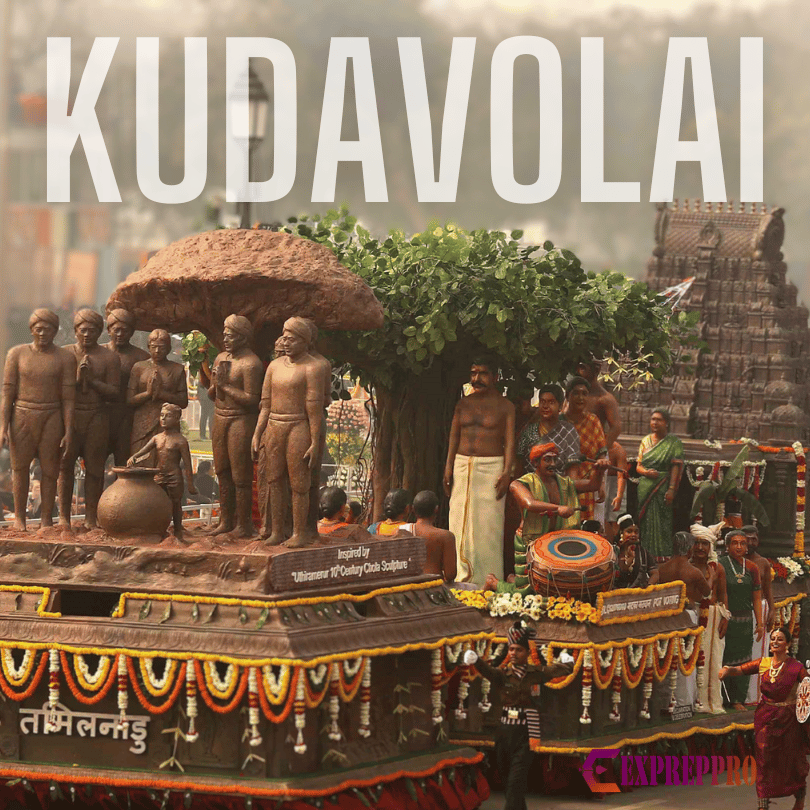
Introduction to the Kudavolai system
Tamil Nadu’s Republic Day tableau highlights the historical Kudavolai election and can be seen as the earliest form of panchayat election. Strong rural and urban bodies for local administration were an important feature of the Chola administration. The ancient democratic system of local self government of Cholas is known as the Kudavolai system.It was a special feature of the Chola administration.
Ur and Sabha
The Ur was the body responsible for Vellanvagi villages or non-bramadeya villages. The Sabha was responsible for Bramadeya villages. It was a Brahmana assembly responsible for managing landed property, temple properties, revenue collection, supervise religious festivals and activities etc.
To look after various affairs, the Sabha was further divided into smaller committees like general management( pancavara variyam), tank(eri variyam), and gold(pon variyam).
Apart from two Tanjavur inscriptions, the Utteramerur inscription (Parantaka Chola I) details Cholas’s rural administration.
Kudavolai System (pot-tickets)
Uttaramerur inscription details about exciting features of the Kudavolai (pot-tickets) system.
The membership criteria include property ownership(Owning more than a quarter of Veli tax-paying land, Owning a house in his site), education( must know Matrabramana (person teaching others), at least knowledge in one Veda and one of the four bhasyas), good conduct, possess honest earnings, age between 35-70 (another inscription gives 60 and 30).
The election –
The Kudavolai system was used to elect members from eligible persons. There will be thirty wards and pot tickets were collected from each ward by going to the wards. Name-written palm leaves were drawn, one by one, by a boy. At last, successful names were announced to the people by the arbitrator. Usually, the arbitrator will be a priest(numbimar).
One member from the elected committee with honest earnings can handle the accounts as the finance officer or accountant. Before contesting, he should declare his accounts.
The number of Sabha members varies. Various epigraphic records and inscriptions indicate larger Sabhas with 300, 500, or even 12000 members.
The Utteramerur Inscription(Vikunda Perumal temple, Kanchipuram, Tamil Nadu) provides the first information about local administration, elections, qualifications, and disqualifications. This was the earliest democratic form of local or panchayat administration.
- Utteramerur Inscription of Parantaka Chola I. ↩︎

